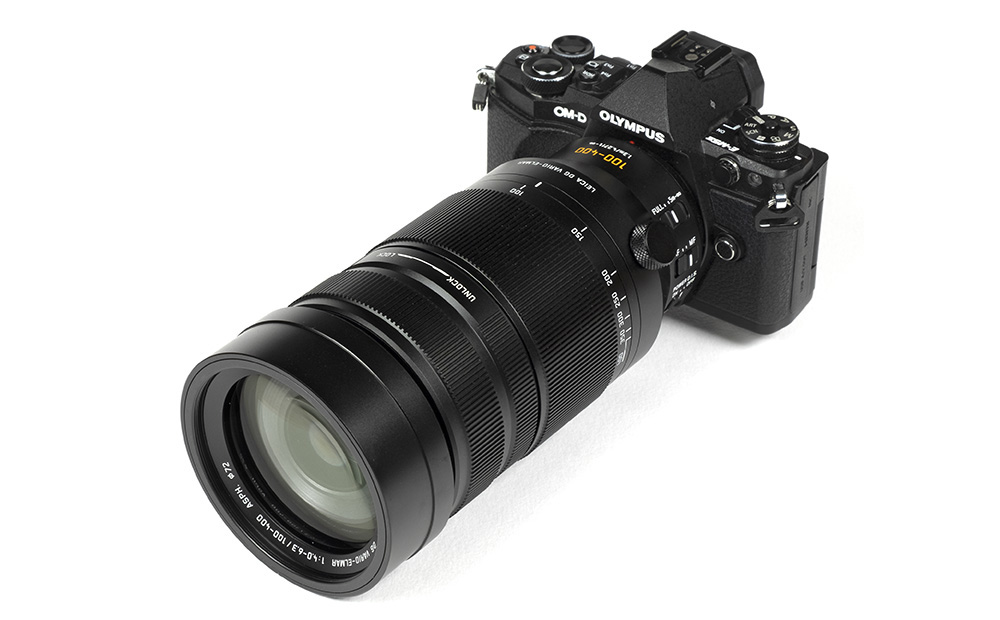by Klaus Schroiff, published December 2019
Introduction
There are long lenses and REALLY long lenses – and the Leica DG Vario-Elmar 100-400mm f/4-6.3 ASPH Power OIS falls into the 2nd category. While the focal length range is nothing special on paper, it translates to “200-800mm” on full-format cameras. This illustrates one of the advantages of the Micro-Four-Thirds system – thanks to the 2x crop factor, Tele lenses can be extreme with comparatively little design efforts and they can be offered at a very reasonable price. These days the Leica lens can be yours for about 1400EUR/1500USD and there are fairly frequent promotions. That’s still a lot of money but it’s still darn affordable within its scope. The lens is also very compact at just 171mm in length and light-weight at a tad below 1Kg without accessories. Of course, there is also a reason for that – the rather slow maximum aperture and the corresponding limits in terms of depth-of-field. Such is life – you can’t have it all, of course.
The build quality is impressive. The body is an all-metal construction and everything’s pretty tight – and some may argue that it’s too tight when it comes to the zoom mechanism. You can also use a zoom lock at any position in the zoom range. The focus ring operates smoothly. It is one of the few modern lenses with a telescope-style lens hood albeit it’s rather tiny. However, an additional conventional lens hood is also provided. Besides the two lens hoods, the lens also features two tripod mounts – reads: there is one straight on the lens with a very low profile and you can attach an add-on tripod mount when needed. This is an outdoor-focused lens and Panasonic/Leica was smart enough to implement weather-sealing.

The AF is surprisingly fast and essentially noiseless. A focus limiter is provided to limit focus-hunting. Modern Tele lenses are pretty much always provided with an image stabilizer these days and the Leica lens is no exception. The manufacturer isn’t overly vocal about the efficiency but don’t expect more than a 2, maybe 3 f-stops gain in real-life. Beyond 300mm, it is also fairly obvious that the image stabilizer is at its limit. Using a Panasonic camera featuring Dual IS instead of an Olympus camera may be a good idea wit this lens.
The product image below shows the fully extended lens at 400mm with the add-on lens hood and add-on tripod mount.

| Specifications | |
|---|---|
| Equivalent focal length (full format) | “200-800mm” |
| Equivalent aperture (depth-of-field) | “f/8-12.6” |
| Optical construction | 20 elements in 13 groups inc. 1x aspherical ED , 1x UED, 2x ED |
| Number of aperture blades | 9 (rounded) |
| min. focus distance | 1.4m (max. magnification 1:4) |
| Dimensions | 83x171mm |
| Weight | 985g |
| Filter size | 72 |
| Hood | barrel-shaped (built-in), add-on external lens hood |
| Other features | tripod mount, image stabilizer, splash/dust-proof |
Distortion
Micro-Four-Thirds cameras are using an auto-correction mechanism for image distortions thus there is nothing to worry about in this respect.
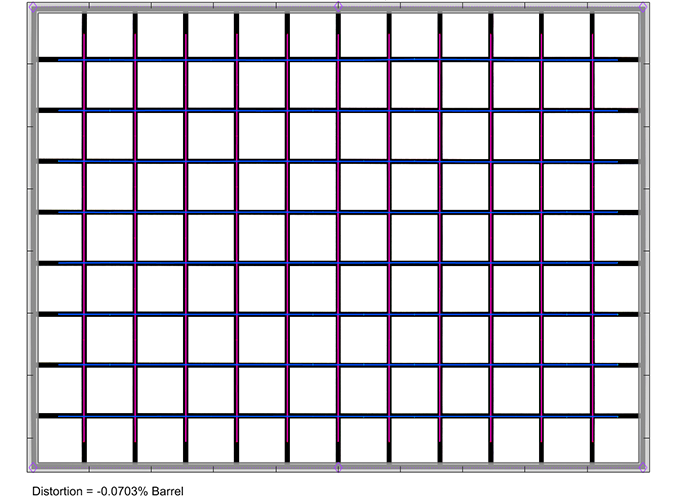
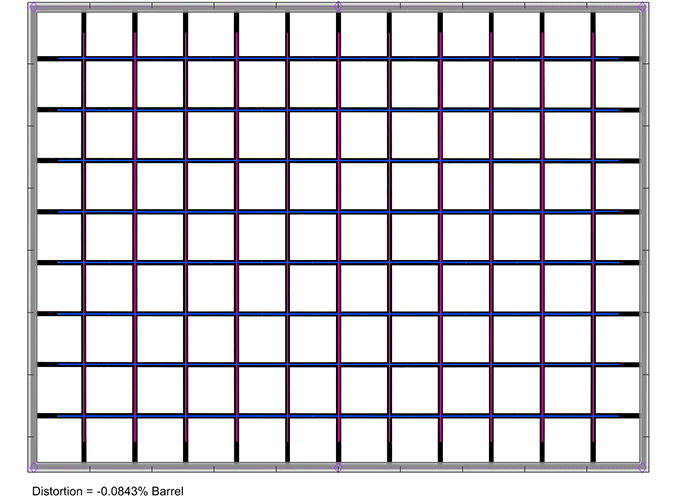

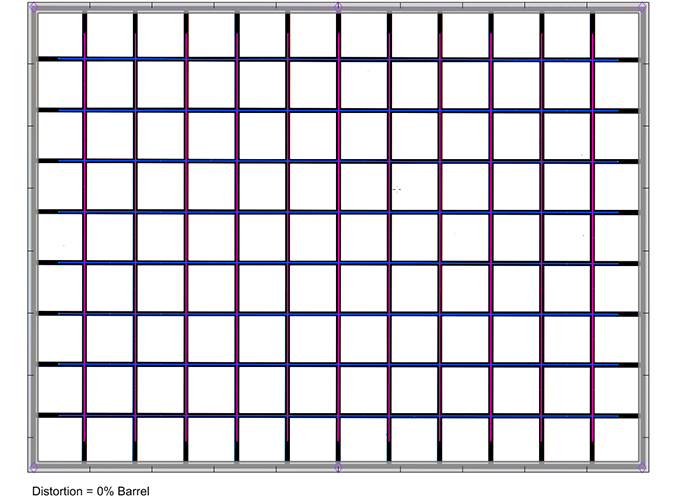
When looking into the RAW data, you can still determine the native distortion characteristic of the Leica lens. There are only slight pincushion distortions across the zoom range so the auto-correction doesn’t have to be overly aggressive in the first place.

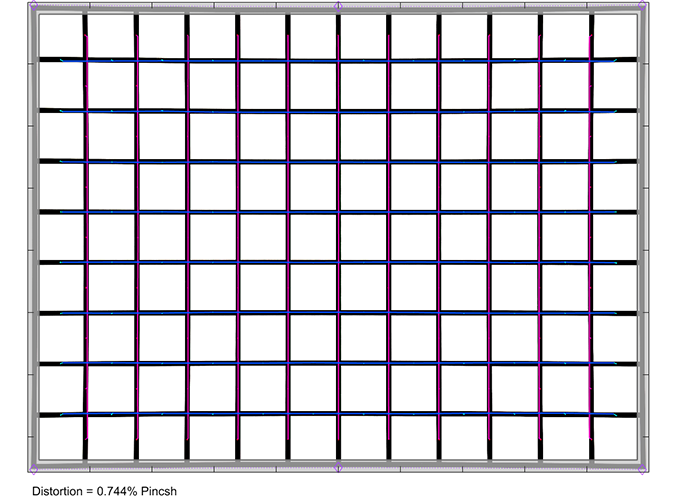

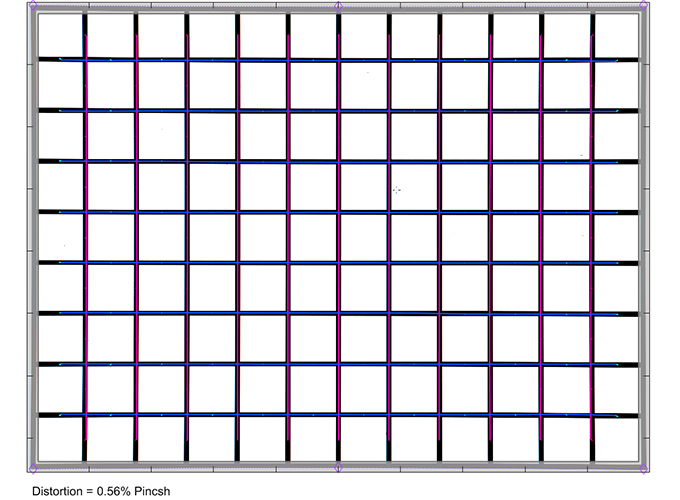
Vignetting
Vignetting is another aspect that is usually corrected under the hood thus the issue is basically negligible from an end-user perspective.

If you choose to disable auto-correction, you will spot a more pronounced vignetting at fully open aperture but it’s still nowhere close to what you’d get on a full format lens. Stopping down by about 1 f-stop resolves the issue by most standards.
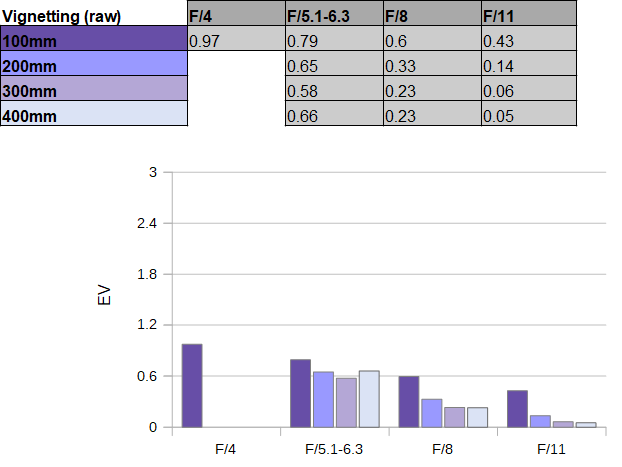
MTF (resolution)
The Leica DG Vario-Elmar 100-400mm f/4-6.3 ASPH Power OIS is a diffraction-limited lens on Micro-Four-Thirds cameras – meaning that the highest resolution is achieved at maximum aperture (typically an aperture around f/2.8 has the highest resolution potential in this system). Even so, the lab results are quite impressive. The center performance is excellent between 100mm and 300mm till about f/8. The outer image field is very good. At 400mm there’s a slight drop in quality at f/6.3 but there is still no reason to complain here. Stopping down a little may give you a tad more contrast here. Expect softer results from f/11 onwards … but then that’s rarely a use case. Please note that these results reflect optimal conditions. In real life, you will probably struggle to come close at the extreme tele end due to the inevitable jittering and air diffusion.
The field curvature is very low. The centering quality of the tested sample was very good.
Please note that the MTF results are not directly comparable across the different systems!
Below is a simplified summary of the formal findings. The chart shows line widths per picture height (LW/PH) which can be taken as a measure for sharpness. If you want to know more about the MTF50 figures you may check out the corresponding Imatest Explanations

Chromatic Aberrations (CAs)
Lateral CAs (colors shadows at the image borders) are very well controlled and usually not an issue with a maximum width of 0.6px at the image borders.

Bokeh
The Leica DG Vario-Elmar 100-400mm f/4-6.3 ASPH Power OIS is a slow lens. However, even so, you can achieve a fairly decent shallow depth-of-field because you can “get close” to your main subject in terms of object magnification. Extreme tele zoom lenses tend to struggle with the quality of the bokeh. i.e. a distinctive outlining of out-of-focus highlights is a frequent issue. As you can see below, the Leica lens is not immune to an “onion-like” substructure within the highlight discs but it’s comparatively moderate for a lens in this class.

As usual, the highlight discs deteriorate towards the image borders/corners as shown below. Stopping down reduces this (vignetting-)effect.
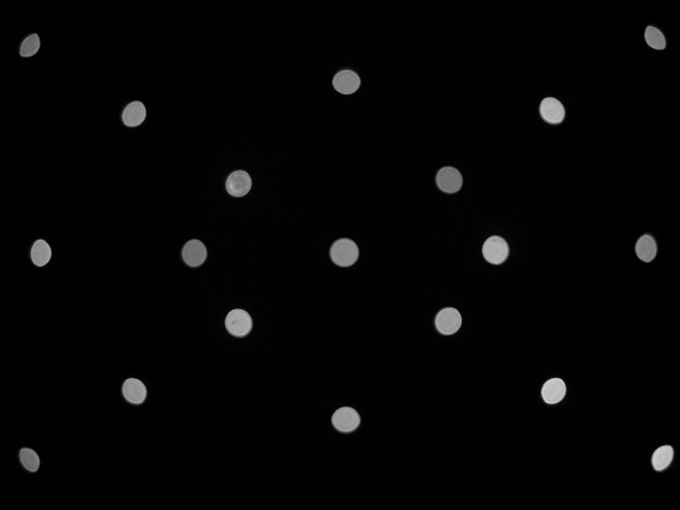
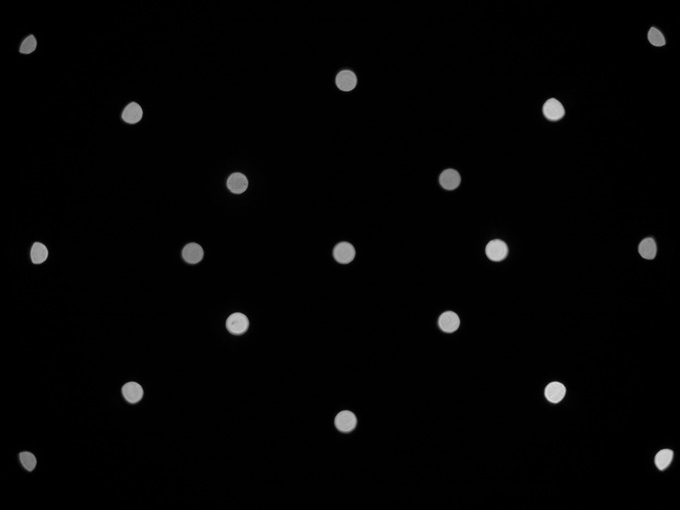

The general rendition of out-of-focus areas is very smooth in the image foreground (show to the right below). The background bokeh is quite good as well but high contrasts are maintained so the result isn’t as smooth.

Sample Images
Competition
As of the time of this review, the Leica DG Vario-Elmar 100-400mm f/4-6.3 ASPH Power OIS (shown to the left below) has no direct competitor with the Micro-Four-Thirds system. That is until Olympus will finally release the 150-400mm f/4.5 PRO IS in early 2020. However, expect this lens to have at least the double price tag. If you don’t require 400mm, the Panasonic 100-300mm f/4-5.6 Mega OIS II may be an option but it can’t really touch the quality of the Leica lens. That being said, it’s much cheaper. Somewhat more related is the Olympus 300mm f/4 PRO IS (with 1.4x converter). The Olympus lens is undoubtedly sharper but also bigger and, again, in a different price segment. Still, if you prefer Olympus cameras, it is probably a smarter choice because you can take advantage of Olympus’ awesome Dual IS.

Visual comparison courtesy of camerasize.com.
The Leica DG Vario-Elmar 100-400mm f/4-6.3 ASPH Power OIS is a unique and probably quite under-appreciated lens. Unlike pretty much all other lenses on the market, it combines compact size, extreme reach and very decent quality in an affordable package. In terms of optical quality, it is limited by its slow maximum aperture. f/4-6.3 is already way beyond the optimum aperture point (around f/2.8) for Micro-Four-Thirds lenses so the image quality is affected by diffraction. Even so - within its context, the potential quality (that is under optimal conditions) is impressive. The resolution is, of course, highest in the lower part of its zoom range. However, even at 400mm, it remains on a very good level. Image distortions and lateral CAs are nothing to worry about. If you use image auto-correction, this also applies to vignetting. The quality of the bokeh is good for such a zoom lens but keep in mind that prime lenses are always better in this respect.
The achievable quality at such extreme focal lengths is probably more limited by your own ability to handhold the lens steady at realistic shutter speeds. The image stabilizer helps, of course, but at least at the 400mm setting, it is clearly at or already beyond the maximum that such a system can provide because the angular change due to jittering is massive here. We tested the lens on an Olympus E-M5 II which doesn't support Dual IS (hello, Olympus/Panasonic - please do something about it!) and you have to concentrate hard in order to keep the image steady at 400mm. The extra potential Dual IS can provide does probably come handy so a Panasonic camera may be a better match here.
The build quality is very good indeed thanks to a tightly assembled, all-metal body. Some may argue that the zoom action is too tight and there's some truth in that. Zooming does indeed require some effort but it is not extreme really. The lens has a rather curious approach regarding the two lens hoods. Yours truly is usually too lazy when it comes to mounting a lens hood so the built-in one, albeit tine, is greatly appreciated. As you can expect from a lens in this price class, weather-sealing is provided.
You may argue that the Leica DG Vario-Elmar 100-400mm f/4-6.3 ASPH Power OIS a very specialized lens but in some situations there's just no substitution for long focal lengths but longer ones. If you are into sports and wildlife and want to limit the burden of carrying a even bigger, fast(er) lens - and who doesn't - it's an obvious choice. Therefore highly recommended!
-
Optical Quality
-
Build Quality
-
Price / Performance


